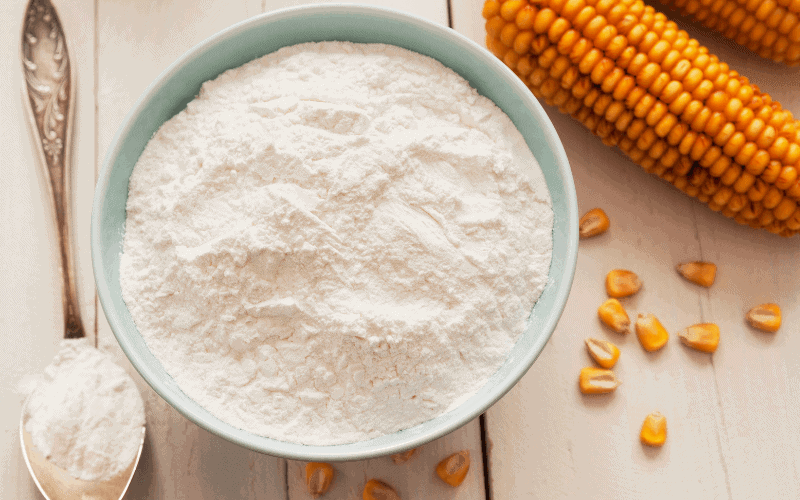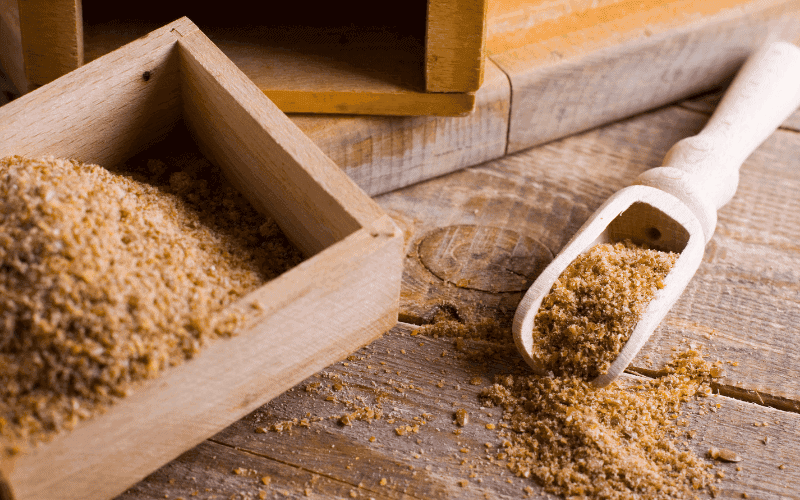This article may contain affiliate links and if you make a purchase after clicking on a link, we may earn a small commission at no additional cost to you.
Wheat starch is the major component of noodles and pasta, with up to 70% of its entire weight. Wheat starch is just ground wheat grains that have undergone specific processes to get to their final form.
Wheat starch is an excellent choice for cooking and thickening. However, some people do not prefer it due to the rigorous process of ripping the nutrients out.
Fortunately, there are a few wheat starch substitutes available to everyone as an alternative. Some of these substitutes include corn starch and cassava starch.
What is Wheat starch?
Wheat starch is ground wheat grains that have gone through stages to get to their final product. It goes through an extraction process from the endosperm of the wheat grain.
The extraction happens even before grinding. During this process, there are little to no components and nutrition.
You can use wheat starch for cooking, thickening puddings and soups, and producing paper.
Best Wheat Starch Substitutes
There are numerous wheat starch substitutes in the form of pure starch. Unavailability of the wheat grain could lead you into seeking other preferences.
Or probably, you need a different raw ingredient for your starch. Here is a list of wheat starch alternatives, all of which contain pure starch:
1. Corn Starch

Corn starch is quite popular and serves as a good substitute for wheat starch. It doesn’t contain gluten and is safe for persons who are gluten intolerant or have celiac disease.
The most significant difference between wheat starch and corn starch is their raw. While wheat starch is made from wheat grain, corn starch is made from corn kernels. It can also be used as a thickening agent for soups and gravies.
2. Tapioca/ Cassava starch

Tapioca starch is a gluten-free starch. It is gotten from cassava roots which are ground, and their liquids extracted. The extract is now dissolved with water and allowed to evaporate.
The end result is usually tasteless and lacks nutrients, just like the wheat starch. Tapioca/cassava plants typically contain cyanide, so you need to buy them from a reputable manufacturer. They also need to be treated before use.
3. Ground Flaxseed

Flaxseed is a fiber crop native to Asia and southern Europe. As the name implies, ground flaxseed is gotten from flaxseed that has gone through grinding.
They can also be used as thickeners for soups, stews, and gravies. However, unlike the wheat starch, ground flaxseed could clump together. So, you need to be extra careful when using it.
4. Potato Starch

Potato starch is easily found in groceries and can be used as an alternative to wheat starch. During the extraction process, fresh potato is crushed to squeeze out the starch.
After that, the potato extract is left to evaporate. They are also gluten-free.
5. Guar Gum

Guar Gums are made from a legume called guar beans. They are gluten-free; they are safe for persons with celiac disease or gluten sensitivity.
And are great for thickening. Guar gums do not require heat to thicken your food. They can use be casually sprinkle over your meal.
6. Psyllium Husk Powder

Psyllium Husk Powder contains zero carbs or fat. They are high in fiber and gluten-free. They are a safe substitute for wheat starch, even though they are scarce.
Psyllium Husk Powder is not the best substitute for wheat starch. They are high in fiber and carbs and wouldn’t be great for persons with sensitive stomachs. They can also be used as laxatives.
7. Arrowroot

Arrow shoot is gotten from the roots of an arrowroot plant. Although it is gluten-free, it is also high in fiber.
It is not a great substitute, and caution should be taken while using it. In making the arrowroot powder, the roots are dried and ground into powder.
Frequently Asked Questions
Is Wheat Starch Safe For Eating?
Wheat starch is safe to eat, especially on a gluten-free diet. It is sometimes known as an empty calorie.
It is also great for persons who are on a diet and trying to regulate their calory intake. The downside, however, is that wheat starch lacks micro-vitamins, vitamins, and minerals.
Is Wheat Starch Gluten-Free?
Wheat starch is a safe option for persons with gluten intolerance or celiac. The rigorous extraction process used to get its final form contains little to no nutrients, including gluten.
However, FDA’s rule states that wheat starch is a gluten-free food as long as it contains less than 20 ppm of gluten. The FDA considers wheat starch a process of removing gluten.
Is Wheat Starch The Same As Cornstarch?
The difference between wheat starch and cornstarch lies in their raw ingredients. While wheat starch is made from wheat grain, cornstarch is made from corn.
Are Wheat Starch And Wheat Flour The Same Thing?
The most significant difference between wheat starch and wheat flour is the extraction process. Wheat starch is dissolved with water and left to evaporate. During this process, the wheat starch loses its nutrition to a large extent.
On the other hand, wheat flour is achieved by grinding the wheat grain together with the endosperm. The germ part is also ground for brown wheat.
Another difference between wheat starch and wheat flour is its gluten contents.
Because wheat starch has been ripped of all its components, it essentially loses all its nutrients, including the gluten. It is safe for persons who are gluten intolerant. Wheat flour, however, contains high amounts of gluten and a little protein.
For culinary purposes, wheat starch and wheat flour are used for very separate things. They are hardly be substituted for each other.
Unlike wheat flour, wheat starch is tasteless. They are usually used as thickening agents to make sauce and soups delicious. And they do not clump together.
Recommended Readings:
- Jerk Seasoning Substitutes
- Substitutes For Cajun Seasoning
- Water Chestnuts Substitutes
- Best Pernod Substitutes
- Top Substitutes for Shiitake Mushrooms
Conclusion | Alternatives To Wheat Starch
Wheat starch is an excellent thickening agent for soup, stew, sauce, and gravy. Where starch is unavailable, other listed wheat starch substitutes are just as good.
These wheat starch substitutes are excellent thickeners and also gluten-free. It is also essential to note that while picking wheat starch or any of its substitutes, select a reputable manufacturer. Enjoy.